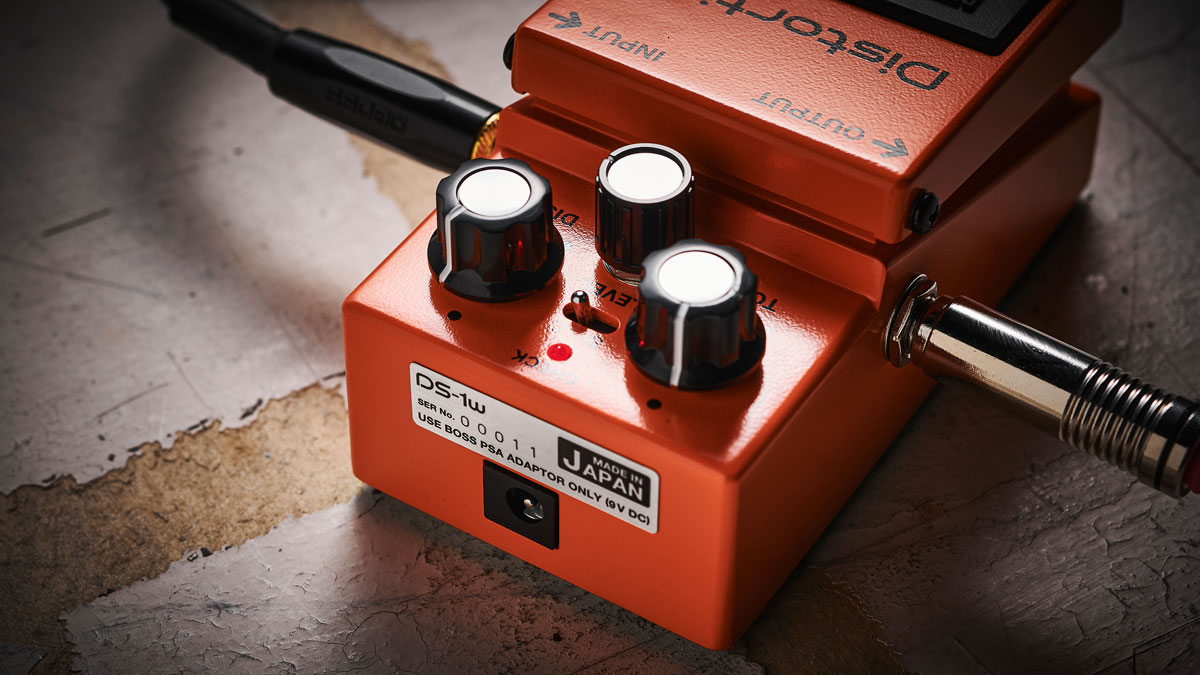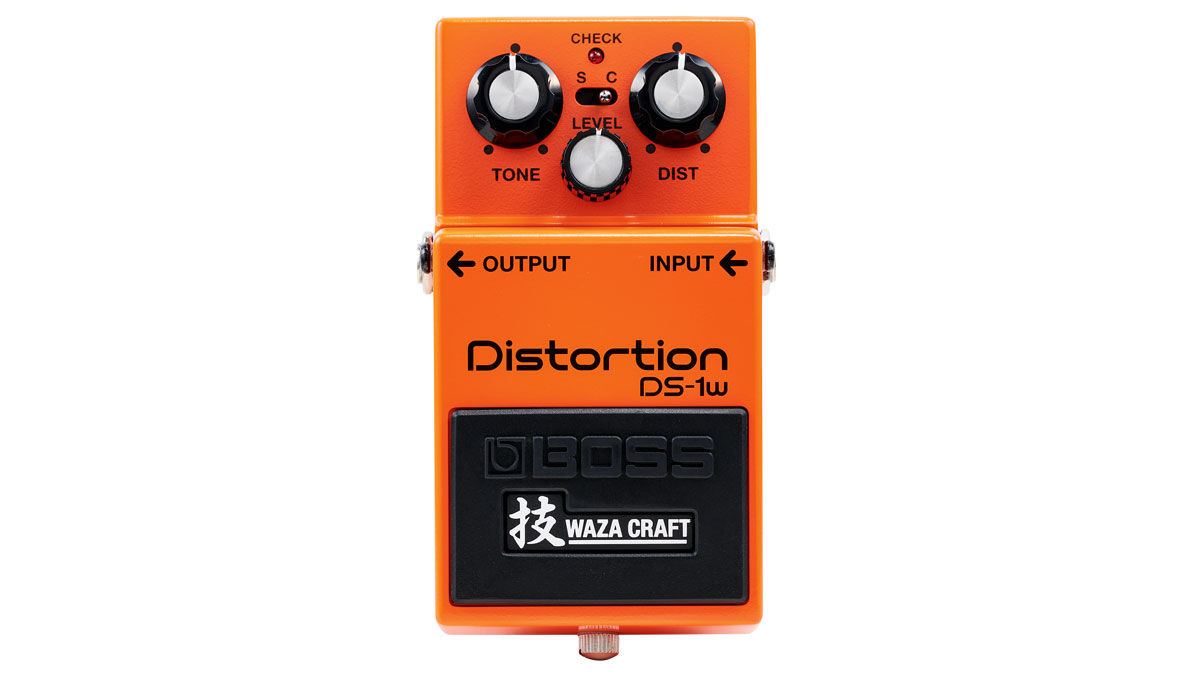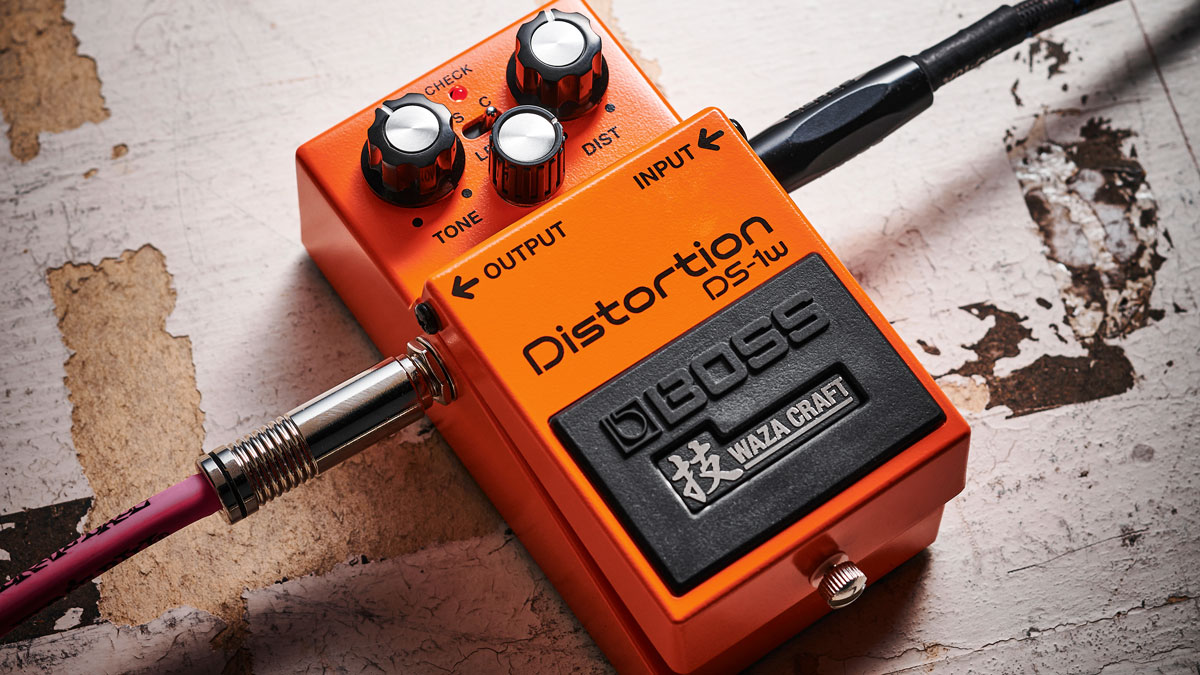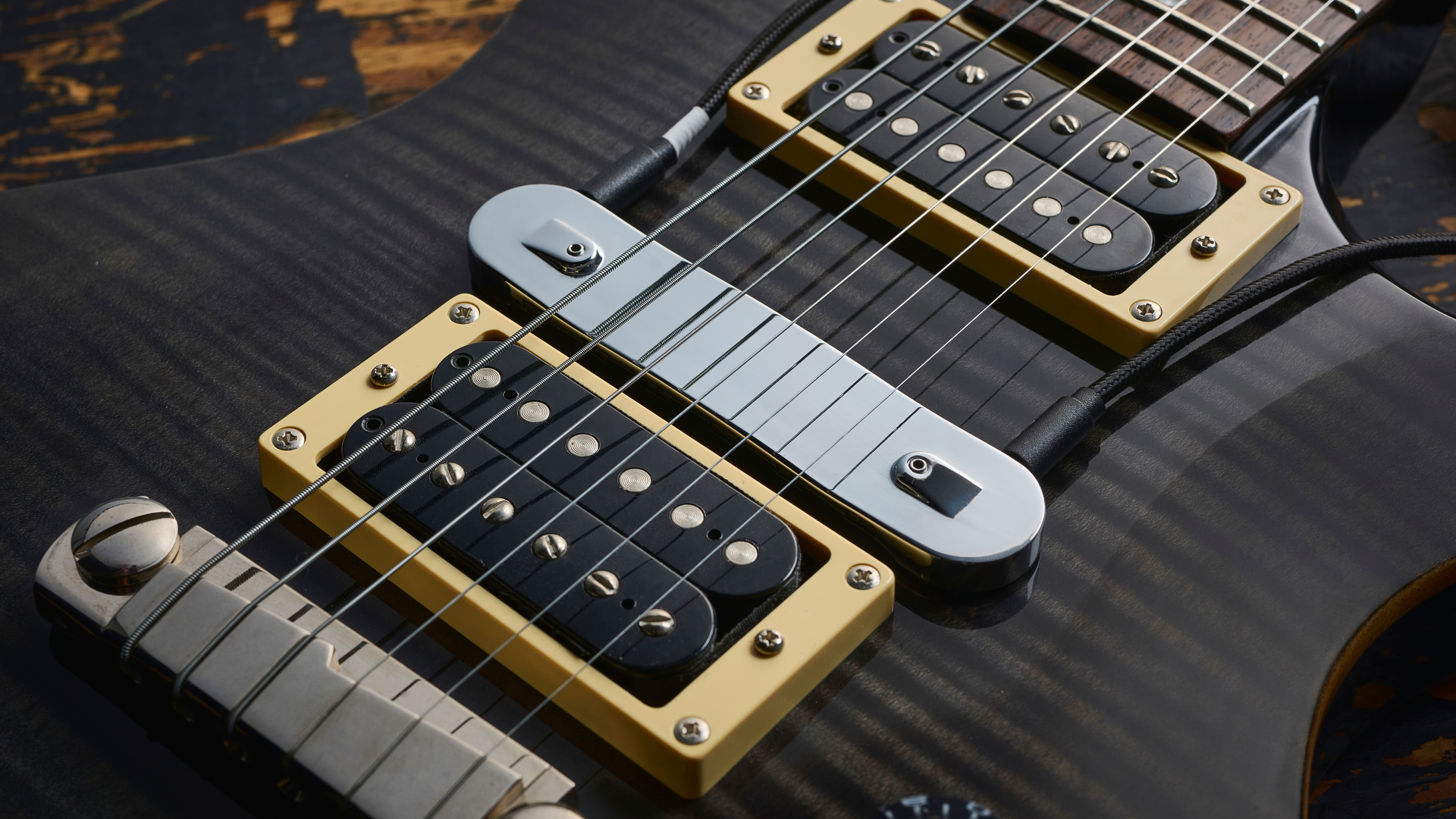Guitar World Verdict
All that familiar, classic DS-1 sound is still there, but the added mode’s rich and tactile distortion makes this version of the pedal a much more versatile proposition.
Pros
- +
Welcome update on a classic.
- +
Two very usable modes.
- +
Increased tactile response and more usable volume in C mode.
Cons
- -
Not a thing.
You can trust Guitar World
Over the past few years, Boss has been introducing Waza Craft versions of some of its compact pedal series: premium versions featuring a complete redesign of the original circuits by the original developers.
Some of these have been welcome revamps of pedals that have been out of production for some time, such as the CE-2, the DM-2 and the Dimension C. But this latest is not only one of the earliest Boss compacts but one that has been continuously in the Boss catalogue since 1978 and is, in fact, its bestseller.
The DS-1W retains the original pedal’s triumvirate of Tone, Distortion and Level knobs but features two modes selected via a top-panel toggle switch. S is Standard mode, offering the sound of an original DS-1, while C is a new Custom mode, which delivers an alternative take on it.
Firing up the pedal in S mode you’re confronted with a sound that will be familiar to many, considering that Boss has sold over 1.5 million units and the DS-1 has been put to prominent use on stage and in recordings for the past 44 years!
There are no clean sounds here – you’re into hard-edged distortion from the get-go with the Distortion knob at zero and the Level knob cranked up fairly high (from three o’clock onwards) to make sure the sound doesn’t recede as you kick the pedal in.
The sound here is characterised by scooped midrange, but it can be nicely tailored with a Tone knob, which sets just the right balance of rolled-off bottom-end with strident highs.

Switching over to C mode, you’ll notice a volume jump as it’s 6dB louder with a different midrange profile. The sound is thicker with the mids poking forward, giving more presence to cut through a mix, and that extra 6dB offers much more leeway in adjusting the Level for a boost.
What’s more, there’s increased sensitivity to picking and volume knob control, engendering a more dynamic playing experience suited to a range of musical scenarios.
Specs

PRICE: $149/£125
ORIGIN: Japan
TYPE: Distortion pedal
FEATURES: Buffered bypass
CONTROLS: Tone, Level, Distortion, S/C switch, Bypass footswitch
CONNECTIONS: Standard input, standard output
POWER: 9V battery or 9V DC adaptor (not supplied) 15mA
DIMENSIONS: 73 (w) x 129 (d) x 59mm (h)
CONTACT: Boss
Trevor Curwen has played guitar for several decades – he's also mimed it on the UK's Top of the Pops. Much of his working life, though, has been spent behind the mixing desk, during which time he has built up a solid collection of the guitars, amps and pedals needed to cover just about any studio session. He writes pedal reviews for Guitarist and has contributed to Total Guitar, MusicRadar and Future Music among others.
“Our answer to everything players have asked for and more”: Neural DSP’s Nano Cortex had one major drawback – but now it’s been addressed with a huge free firmware update that takes on Kemper and TONEX
"The ability to use this as a midweight MIDI brain for a gigging setup is what makes it unique.": Walrus Audio Canvas Clock review













